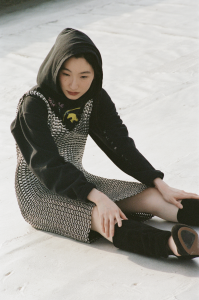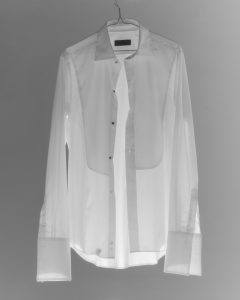Hermès’ iconic silk scarf takes a great leap forward

It is said that the Chinese empress Xi Ling-shi discovered silk by accident. A silkworm cocoon fell into her tea, heat slowly unwrapping the fine thread until it could stretch across her garden. The latest from Hermès, by contrast, is the result of a decade of deliberate, closely guarded innovation. A world-first feat in printing, its new silk-twill scarf bears artwork on either side by designer and graphic artist Dimitri Rybaltchenko, a technical leap forward from last season’s offering of two opposing colours. “It is magical and poetic to offer two choices, two atmospheres, two designs, two stories,” notes Christophe Goineau, creative director of men’s silk. “Astonish and surprise – this has always been the hallmark of the men’s silk scarf. It’s the Abracadabra moment!”
The iconic carré (square) scarf was introduced by Hermès in 1937, exactly a century after it was established as a harness and bridle workshop. Expanding from its equestrian leatherwork, the French luxury house used strong silk and an intricate drawing by family member Robert Dumas for its first design. In the following decade they were painstakingly drawn and dyed by hand, the engraving and silk-screening achieved with woodblocks. This technique was eventually replaced by a traditional method pioneered in its Pierre-Bénite workshops, near Lyon, meticulously printing each colour frame by frame. Made from the silk of 300 moth cocoons, hems hand-rolled and stitched, a single scarf can take two years to finish.
Designs – of which there have been over two thousand – are complex and colourful, revolving around mythology, cartography, flora and fauna. Styled in myriad forms, figures such as Queen Elizabeth II, Jackie Kennedy Onassis and Grace Kelly (who famously used hers as a sling after she broke her arm) have become synonymous with the accessory. While a men’s line was introduced comparatively recently in 2004, both sexes have enjoyed the androgynous versatility of the scarf since its inception.
Rybaltchenko’s dual story of driving a vintage or Formula 1 car – Formule chic – is a rush of motion and muted green, burgundy and teal. Anchored by the first-person perspective, they are rich and detailed universes that speak to the brand’s convergence of man, machine, precision and speed. “Innovation is the result of constantly renewed creativity,” says Goineau. “For us, it means supporting the momentum and spontaneity of creation while remaining faithful to our history. It is the perpetual movement of the soul of the house.”

This article is taken from issue 27. To buy the issue or subscribe, click here




